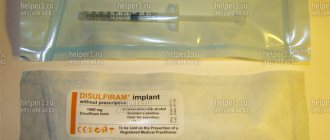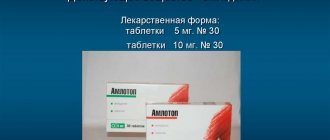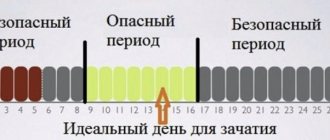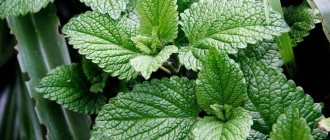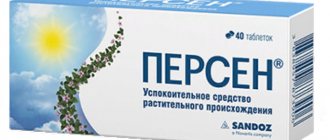Peppermint and its relatives
Mint has been known to our ancestors since ancient times. In Ancient Egypt, bunches of mint were placed in the tombs of the pharaohs, and in Greece it was considered a powerful aphrodisiac.
The scientific name itself (lat. Mentha) appeared thanks to ancient myths. According to one of them, the ruler of the underworld Hades fell in love with the young nymph Mentu. Hades' wife, the goddess of vegetation and fertility Persephone, in her anger turned the girl into mint.
The Hellenes used the leaves of the plant in funeral rites and to treat the sick. Long before the invention of menthol toothpastes, Hippocrates advised the use of mint infusion as a means of oral hygiene.
A few centuries later, in Ancient Rome, mint began to be used in a more utilitarian way: the leaves were rubbed on tables before festive dinners to ensure guests were in a good mood, and mint infusion was sprinkled on rooms and served to refresh the face.
From the Mediterranean, the aromatic herb spread throughout the world: first it came to the British Isles during military campaigns, and then further. In the 12th century, the first written mentions of mint appeared in Rus': here it was known under the names “dragolub”, “bezhava”, “perekop” and “chill”. A cooling infusion of mint (“jellied meat”) was used for hygienic purposes: they rinsed the mouth after eating and rinsed the body with it to give a pleasant smell.
Peppermint
Peppermint (lat. Mentha piperita) is the most common and widely used subspecies, which, surprisingly, is an artificially bred hybrid of wild water mint and spearmint many centuries ago.
This is the plant we imagine when we hear the word “mint”. It is used in cooking and medicine. For the manufacture of perfumes and cosmetics, two other types are more often used - Japanese and swamp mint.
Lemon Balm (Melissa)
There is another related plant that is sometimes confused with mint or called lemon balm. This is lemon balm (lat. Melissa) - a cousin of the usual peppermint, belonging to the same family of Lamiaceae. With a similar refreshing taste, lemon balm differs from peppermint with its bright lemony aroma.
MENTHA PIPERITA L.
Sem. Lamiaceae (Labiatae)
DESCRIPTION. Cultivated plant of hybrid origin. Considered a hybrid between Mentha aquatica L. and Mentha spicata L. (M. viridis L.). The latter, in turn, is considered a hybrid formed from crossing M. sylvestria L. and M. rotundifolia Huds. Peppermint is a perennial herbaceous plant 60-100 cm high. The rhizome is horizontal with a weakly fibrous root system that penetrates the soil to a depth of 60-80 cm. The stems are numerous, highly branched, tetrahedral, herbaceous, erect, having (depending on the variety) different colors . The leaves are opposite, petiolate, oblong, pointed. Each shoot ends in a whorled-spike-shaped inflorescence. The flowers are small. The calyx is non-decedent, five-toothed. The corolla is light blue or pale purple, slightly irregular. The fruits are small nuts, sitting 4 in the remaining cup. Blooms in June-August. Seeds are formed only in exceptional cases, have very low germination, and the seedlings obtained from them, due to splitting, are very different from the mother form.
RAW MATERIALS. Medicinal raw materials - dried peppermint leaves (Folium Menthae piperitae) and essential mint oil (Oleum Menthae piperitae). The leaves are sharply serrated, dark green, have an aromatic odor and a spicy, burning, cooling taste. The raw materials must contain at least 1% essential oil; stems and inflorescences no more than 10%. The essential oil obtained by steam distillation from the aerial part of peppermint and purified by secondary distillation must contain at least 50% 1-menthol.
DISTRIBUTION AND CULTIVATION. Peppermint is a cultivated hybrid that is not found in the wild. Currently, there are a large number of varieties of peppermint, including domestic selection. Peppermint is renewed only vegetatively, by planting sections of its rhizomes. Peppermint requires high cultivation standards, selection of optimal predecessors, and places high demands on soil fertility and moisture.
The best time to collect peppermint leaves is the budding and beginning of flowering phase. The cut plants are withered, then collected in heaps, where the raw materials lie until completely dry. The leaves are then threshed. The remaining mass after threshing is processed into essential oil. In addition, all freshly harvested aerial parts (herbs) of peppermint are used to obtain essential oil. The essential oil content in it can reach 3.5%.
CHEMICAL COMPOSITION. All above-ground organs of peppermint contain essential oil. The richest in it are inflorescences and leaves. The main component of the oil is 1-menthol C10H20O. In addition to menthol, the leaf oil contains 1-menthone, alpha and beta-pinene, 1-limonene, a-phellandrene, cineole, pulegone, jasmone, lemon balm, menthol esters with acetic and valeric acids. The main components of the essential oil from the inflorescences are: l-menthone, l-menthol and menthofuran. Alpha and beta pinene, pulegone, sabinene hydrate, piperic acid and sesquiterpene cadinene were found in it as impurities. In addition to essential oil, mint leaves contain carotene, betaine, hesperidin, ursolic and oleanolic acids.
APPLICATION. Peppermint preparations have antispasmodic and analgesic effects and have antiseptic properties. Menthol is widely used, which is taken for angina pectoris, coronary circulatory disorders and disorders of the gastrointestinal tract. In addition, a number of herbal preparations are used: mint tincture (Tincture Menthae piperitae), mint water (Aqua Menthae) and infusion.
In folk medicine, decoctions, oils, powders, infusions based on peppermint leaves are used for cramps, gastrointestinal disorders, flatulence, diarrhea, nausea, vomiting; They are recommended as a choleretic agent for jaundice and gallstones, and as an analgesic for liver spasms, pain at the endings of the tactile nerves, and headaches. Peppermint preparations stimulate cardiac activity, stimulate gastrointestinal secretion, increase appetite, and act as an astringent and anti-inflammatory agent.
The oil (in the form of an alcohol tincture 2:100) is used as an external rub for headaches, migraines, skin inflammation, for inhalation for inflammation of the mucous membrane of the nose, throat, trachea, bronchi, and a decoction of the leaves is used for rinsing the mouth with inflammation of the gums, skin treatment for itching. For stomach pain, it is recommended to take 2-3 drops of peppermint oil. Drop it on a piece of sugar and eat it.
RECIPES
Infusion:
Pour 2 teaspoons of crushed leaves into a glass of boiling water, let it brew; Drink the strained and sweetened infusion in sips (daily dose).
Decoction:
5-20 g of raw material per 1 glass of water. Take 1 tbsp. spoon 3-4 times a day half an hour before meals; from 20 g of raw materials and 200 mg of vinegar (diluted with water) - 1-2 teaspoons 1-2 times a day; for baths and enemas you need 50 g of raw material per bucket of water.
Powder
from mint leaves (on the tip of a knife) take 1-2 times a day with water.
Daily dose of tincture
15 or 30 g - 15-40 drops 3 times a day.
USE IN NUTRITION
Peppermint is used as a seasoning and for making tea.
Mint juice is used in baking bread, cookies, and for preparing blended juices.
Peppermint leaf juice
Wash the young leaves, pass through a meat grinder, pour boiling water (0.3 liters per 1 kg of leaves), leave for 3 hours, strain, bring to a boil, pour into jars, sterilize for 15-20 minutes, hermetically seal and cool.
Dried peppermint leaves
Leaves and young shoots are air-dried in the shade. Store in paper bags.
Use for brewing tea, as a seasoning for sweet dough, jam, compotes.
Mint tea recipes
Green tea with mint
A classic mint tea recipe, ideal for evening tea.
Ingredients
: 2 tsp. tea, 400 ml water and mint to taste.
Green tea with mint must be poured with water. Important: the water temperature should be no more than 80 degrees. Boiling water “kills” the flavor and aromatic properties characteristic of green tea and beneficial substances (flavonoids, catechins, vitamins and amino acids).
Moroccan tea
The world's most famous mint tea is made in Morocco. It was under the name “Moroccan tea” that the recipe spread throughout the world and became one of the most popular drinks for cool weather.
Ingredients
: 2 tsp. green tea (ideally gunpowder), a bunch of fresh mint, star anise, cinnamon and other spices to taste, sugar or honey, water.
Separately, brew green tea, and put mint leaves, spices and sugar in another container (a jug or a large cup), pour boiling water over it (if honey is used instead of sugar, it is better to add it to the finished, slightly cooled drink). Let the tea and mint steep, add tea to the jug and dilute with water if necessary.
Tea with mint and ginger
Ginger-mint tea is known for its medicinal properties and is especially useful during colds and viral diseases - both as a preventive measure and as a drink to maintain strength and restore immunity.
Ingredients
: 3 g of fresh grated ginger (or a little less dried, since dried ginger has a more pungent and pungent taste), mint to taste, water.
Pour boiling water over the mixture of ginger and mint, infuse to taste and let cool. You can add honey or sugar.
Chemical composition
The following biologically active substances were found in the plant:
- Essential oil;
- Resins and tannins;
- Acids: ascorbic, chlorogenic, ursolic, oleanolic, caffeic;
- Carotene;
- Rutin;
- Hesperidin;
- Glucose;
- Neutral saponins;
- Arginine;
- Betaine;
- Phytosterol;
- Ramnoza.
Mint seeds contain fatty oil.
The essential oil of the leaves of the herb contains menthol esters with valeric and acetic acids, dipentene, α- and β-pinene, geraniol, citral, carvone, cineole, dihydrocarvone, phellandrene, limonene.
Which is better: fresh or brewed dried herb leaves?
During the drying process of mint, some of its cells are destroyed, and the loss of moisture from the leaves entails a decrease in the concentration of vitamins. Even with the maximum adherence to technology in industrial production conditions, the plant retains no more than 40% of these elements. The mineral composition of dried herbs remains virtually unchanged.
Read here what methods of harvesting mint for the winter exist.
What does it treat?
Due to its properties and rich composition, mint is used in the treatment of the following pathological processes:
- cardiovascular diseases;
- liver and kidney diseases (cholecystitis, hepatitis, cholelithiasis, etc.);
- digestive disorders, pathologies of the gastrointestinal tract, stomach pain;
- colds, cough;
- nausea, belching;
- increased gas formation;
- asthmatic attacks (in the absence of contraindications);
- sleep disturbances, increased anxiety, stress;
- respiratory tract diseases (pneumonia, bronchitis, etc.);
- inflammation, acne and other skin problems;
- increased body weight;
- menopause, painful menstruation;
- gynecological pathologies in women;
- acute headache or toothache.
Use for women during pregnancy and lactation
If there are no contraindications and the doctor allows the use of mint preparations, they can be used to combat the nausea that accompanies toxicosis. But mint during pregnancy should be taken in very small doses, since pregnant women often develop allergic reactions to various plants.
It is believed that mint in small quantities improves lactation, and in large quantities it suppresses it, so in moderate quantities it can also be used by nursing mothers, again, if the attending physician and pediatrician allow it. You should also ask your doctor how much mint you can drink.
Pharmaceuticals
- Mint herb – used for preparing teas and infusions;
- Packaged mint tea, indicated for the conditions described above;
- Peppermint oil and menthol. They are sold in the form of independent dosage forms in bottles with a dispenser, and are also included in such drugs as Corvalol, Doctor Mom lozenges, Fitolor, Validol, Zelenin drops, Gevkamen, Menovazin, etc.
- Mint tablets that help with vomiting, nausea, gastrointestinal spasms;
- Dental drops, dental elixir.
Where is it used in cooking?
Essential oil and leaves are widely used in the preparation of fruit sauces, sauces, jellies, tea mixtures, cocktails, confectionery, pickles, fish products, etc.
Fresh leaves are added to meat dishes, salads and fruit juices. In industrial production, the spice is used in the production of chewing gum, tobacco and alcoholic beverages.
Morphological description
The rhizome is horizontal, branched, with fibrous thin roots. The stem is straight, from 30 to 100 cm in height, hollow inside, and has 4 sides. The plant is characterized by a large number of lateral branches and leaves. The leaves are opposite, arranged crosswise, have an oblong-ovate shape and short petioles. The tips of the leaves are pointed, the base is heart-shaped and has a sharp-serrated edge.
The flowers are small in size, light purple in color, collected at the top in half-whorls, from which spike-shaped inflorescences are formed. Flowering occurs in the summer, from June to September. The fruit consists of 4 nuts and is formed quite rarely.
Harm
In addition to its medicinal properties, mint has several negative qualities:
- negative impact on male potency (with prolonged use);
- lowering blood pressure (the use of herbs is not recommended for arterial hypotension);
- increased load on the internal organs of children under 6 years of age.
Contraindications for internal use:
- pregnancy;
- breastfeeding period;
- individual intolerance;
- age up to 6 years;
- varicose veins;
- low pressure.
Contraindications
- Children under 3 years of age (drugs containing menthol can cause reflex respiratory depression, even stopping, and collapse);
- Hypotension (due to the risk of low blood pressure);
- Varicose veins (mint components reduce the tone of blood vessels, which can lead to an exacerbation of the disease);
- Inflammatory processes in the gallbladder or gastrointestinal tract, liver dysfunction, low acidity of gastric juice;
- Problems with sexual function in men (mint reduces libido);
- Increased drowsiness;
- Insufficiency of the lower esophageal sphincter (mint helps relax smooth muscles, which leads to the reflux of food from the stomach into the esophagus and heartburn);
- Pregnancy planning;
- Individual sensitivity to mint or intolerance to it.
Only after consultation with a doctor and strictly under his supervision, peppermint preparations can be taken during pregnancy and breastfeeding.
Do not exceed the dosage recommended by the doctor, since an overdose and uncontrolled use of mint preparations can lead to insomnia, cause bronchial spasms, and heart pain.
Beneficial features
Galenic extracts from peppermint have choleretic, antispasmodic, sedative, analgesic and antiseptic properties, and have a reflex coronary dilation effect. Due to the stimulating effect on peripheral neuroreceptors of the mucous membranes and skin, as well as the local irritating effect, they increase intestinal motility and capillary circulation.
Herbal medicines based on peppermint improve appetite, increase the secretion of digestive glands, increase bile secretion, have an antispasmodic effect, reducing the tone of the urinary and biliary tract and intestinal smooth muscles.
Due to the presence of menthol, the leaves of the plant have an antiseptic effect. The antimicrobial properties of the herb apply to all types of pathogenic microorganisms that enter the gastrointestinal tract.
It has also been established that peppermint has a weak hypotensive effect, but it has no practical significance.
Side effects
- Therapy with mint preparations may be accompanied by general lethargy and drowsiness, so such treatment excludes the possibility of driving a car and working with precision mechanisms, which require increased concentration.
- Another unpleasant side effect for men is a decrease in potency. However, such a reaction is rarely observed with long-term treatment in large doses and especially in those who already had problems with potency.
- It is believed that mint reduces the ability to conceive.
- People with hypersensitivity may develop allergic reactions such as rash, dermatitis, and itchy skin.
- Excessive consumption of mint causes heartburn.
Author:
Sabuk Tatyana Leonidovna hygienist, epidemiologist
